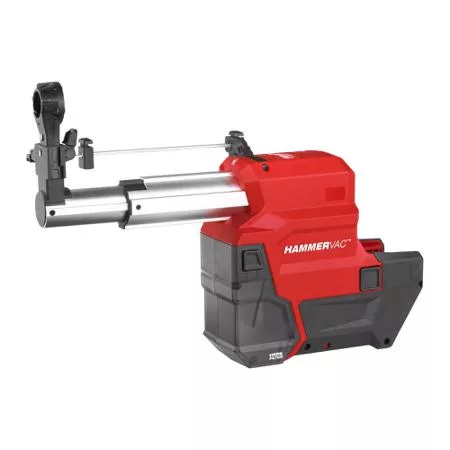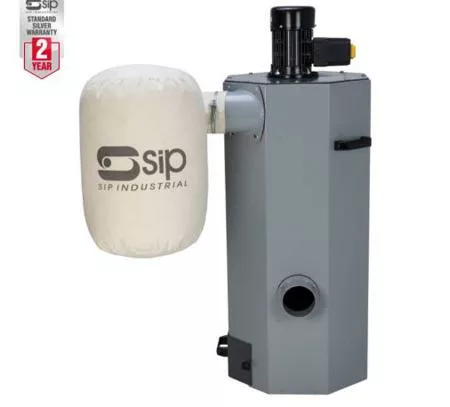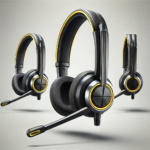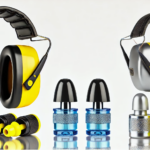
Introduction
In many workplaces, dust, often overlooked, accumulates over time, resulting in poor air quality, potential health risks, and increased maintenance costs. To tackle these challenges, dust extractors offer an effective solution, creating safer, cleaner, and more efficient workplaces. These dust extraction machines are a first line of defense in keeping the air safe for workers. This article explores the importance of dust extractors in diverse work environments to help users understand why they are indispensable.
Understanding Dust, Types of Dust, and Its Health Hazards
Dust is defined as a composition of tiny particles that can come from various sources. Processes such as cutting, grinding, and sanding release dust that lingers in the air and settles on surfaces. There are two primary types of dust: coarse dust, which is visible on surfaces and is simple to clean, and fine dust, which is invisible to the naked eye and causes significant health risks.
Inhaling fine dust particles can cause severe health problems, including respiratory issues, skin conditions, and even long-term lung damage. Dust from wood, cement, or chemicals can aggravate existing health conditions, like asthma, and contribute to occupational lung diseases, such as silicosis. While a vacuum cleaner is effective for general cleaning (coarse dust), dust extractors excel in capturing fine dust, making them a valuable tool for maintaining a healthy and productive workspace.
What is a Dust Extractor? A Brief Overview of Its Components
A dust extractor, also called a dust removal system, is a specialised device designed to collect dust and debris from the air in various environments. Its fundamental function is to capture particles before they disperse into the workspace, improving air quality and protecting people and machinery. Dust extractors are engineered to handle different volumes and types of materials, ranging from fine powders to larger wood chips and metal fragments.
A typical dust extractor comprises multiple components that work together for the effective removal and extraction of airborne particles. These include:
- Filters: Different grades, like HEPA filters, capture particles based on size.
- Fans and Motors: Essential for creating suction and airflow.
- Ductwork: Routes dust from work areas to the extractor unit.
- Collection Bin: Stores collected dust until disposal.
Additionally, dust extractor machines come in different extraction rates, capacities, and voltage ratings to efficiently remove dust in various settings.

Types of Dust Extractors Explained: Exploring Various Options
Dust extractors come in various types, and choosing the right type entirely depends on the particular requirements of your workspace. Some of the popular types include:
- Portable Dust Extractors – These are small, mobile units that can be easily moved around a site. However, these compact machines are used for localised dust collection or for use with hand tools that generate less debris, like sanders and hand saws.
- Stationary Dust Extractors – Unlike portable dust extractor systems, stationary extractors are larger, more powerful systems designed for heavy-duty use in manufacturing and industrial settings. They are permanently installed and can handle large volumes of dust from multiple sources.
- HEPA Dust Extractors – These are high-efficiency systems and can trap 99.97% of particles. They are used in environments where air purity is paramount, such as in the pharmaceutical industry or food production.
Corded vs. Cordless Dust Extractors: Which One To Choose?
Corded and cordless dust extractors are common types of dust extraction systems, each with different specifications and features. They are typically more powerful and have a larger dust capacity, making them ideal for larger clean-up jobs. However, the cord can limit their mobility.
Cordless dust extractors, on the other hand, offer greater flexibility, mobility, and convenience, making them perfect for quick clean-ups and smaller spaces. Moreover, their less suction power and shorter battery life can be limiting factors for larger jobs. In essence, for intensive and continuous use, especially in a fixed location, go for a corded dust extractor. For convenience, portability, and versatility in various environments, a cordless model is a better option.

Workplaces That Benefit From Dust Extractors
Dust extractors are integral to a safe and productive work environment across various industries, such as:
Construction and Renovation Sites
Construction sites are one of the most dust-prone environments where poor visibility due to dust can lead to accidents. Dust extractors help collect harmful particles in construction and renovation sectors before they spread through the air. This ensures worker safety and keeps the workspace tidy, which helps to prevent accidents caused by poor visibility or debris.
Woodworking and Carpentry Workshops
Carpentry and woodworking workshops generate large quantities of sawdust. Fine wood dust, if not properly managed, poses both health and safety risks. It can lead to respiratory problems and fire hazards, as the dust is highly flammable. Dust extractors ensure that sawdust and wood shavings are removed at the source, minimising exposure and reducing dust-related fires.
Metalworking Facilities
In metalworking, processes like grinding, cutting, and welding produce metal particles and fumes that can be extremely harmful if inhaled. Dust extractors capture these fine metal particles, which, if left unchecked, can damage sensitive equipment or settle in the lungs of workers.
Factories and Manufacturing Units
Factories handling raw materials like cement, grain, and chemicals also produce a considerable amount of dust. Dust extraction machines help keep these environments safe by capturing and containing particles before they become a hazard. Moreover, this maintains regulatory compliance and boosts employee morale by providing a cleaner workplace.
Dust Extraction in Laboratories and Healthcare Settings
Cleanliness is essential in laboratory and healthcare environments. Dust extractor systems prevent contamination and reduce the spread of pathogens, maintaining cleaner environments.
Automotive Industry and Dust Control
The automotive industry deals with metal shavings, paint particles, and other fine dust that can harm workers’ respiratory health. A dust extractor helps maintain machinery and extend its life by preventing dust-clog in automotive equipment.
Dust Extraction in Food Processing
Airborne particles in food processing environments can contaminate products. Dust extractors reduce these risks, ensuring a safe production line. Extracting dust before it settles ensures that food remains uncontaminated, protecting the integrity and safety of food products.
Final Thoughts
The importance of dust extractors cannot be overstated across different workspaces. They are not just a piece of equipment—instead, they are an investment in the well-being of both workers and the business itself. By investing in an appropriate dust extraction system, businesses can protect their workforce, enhance productivity, and maintain compliance, making dust management a worthwhile commitment for any workplace.





















